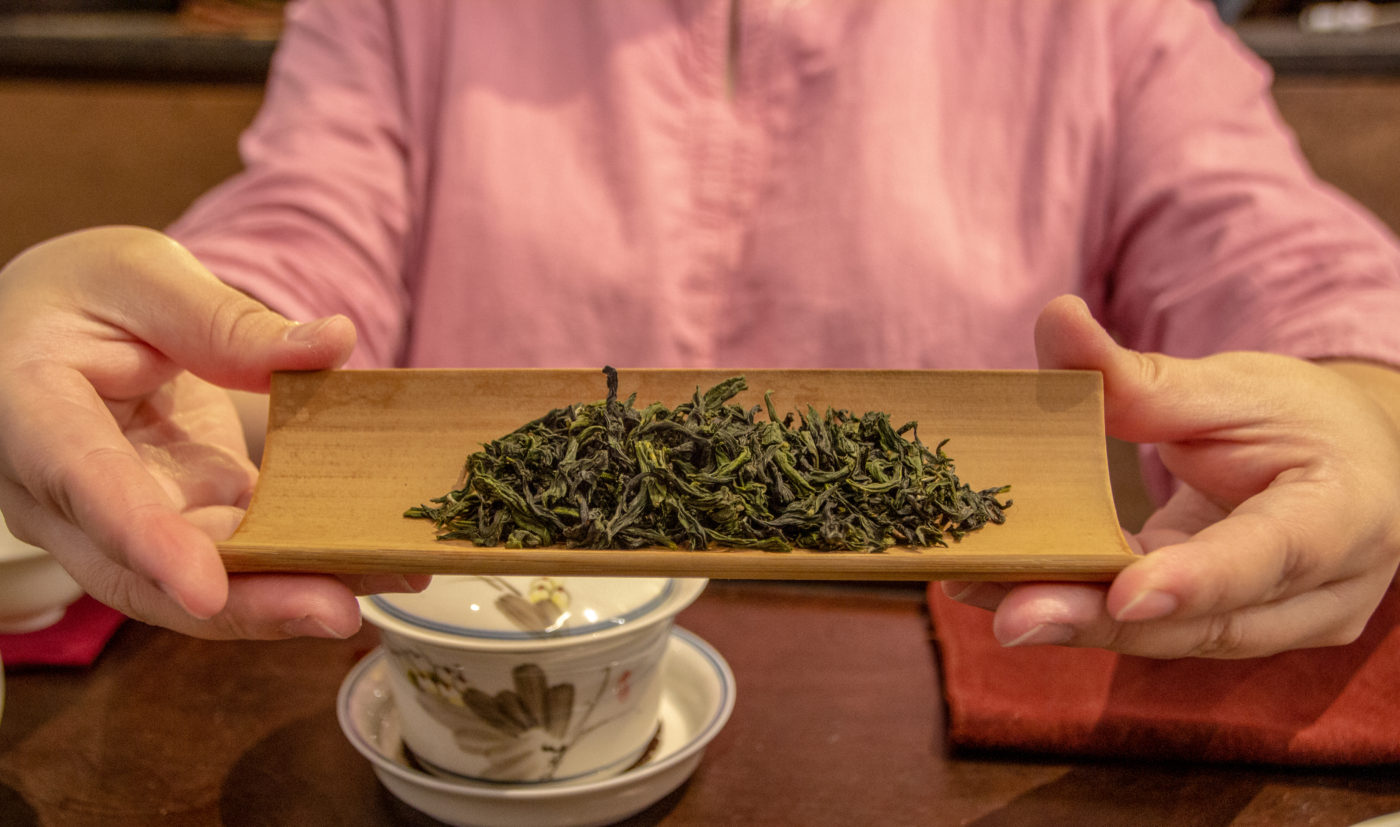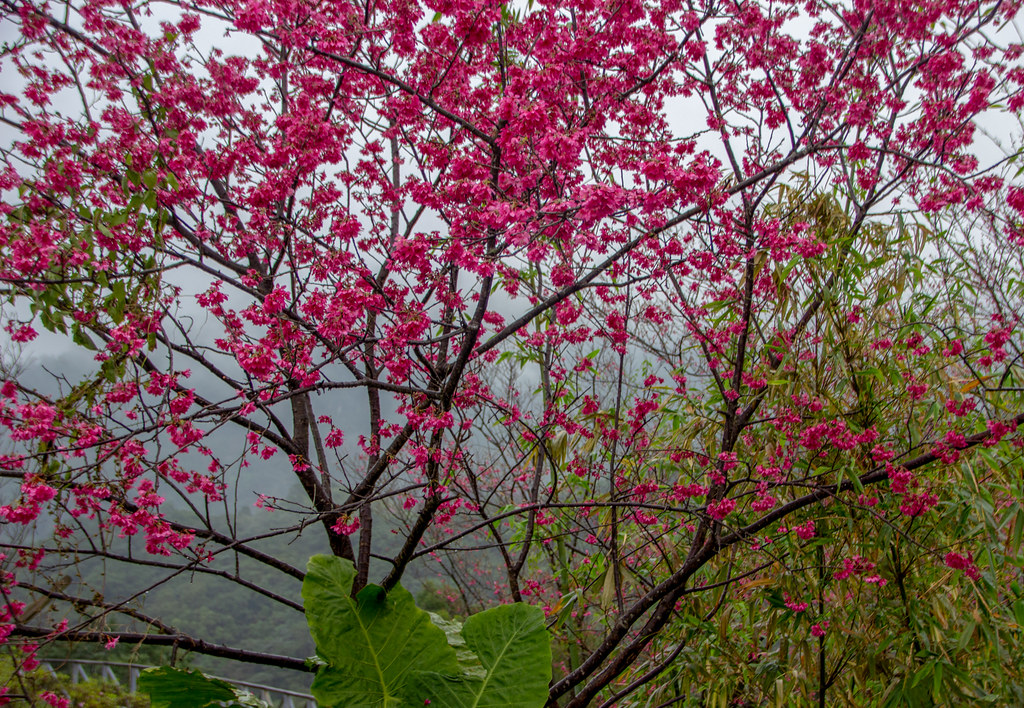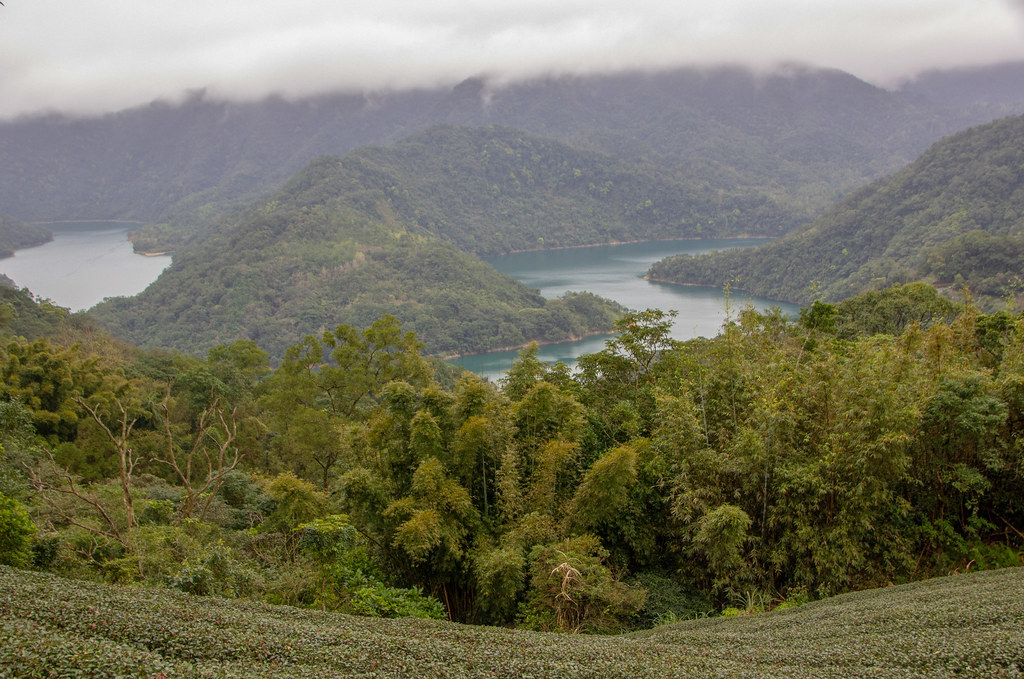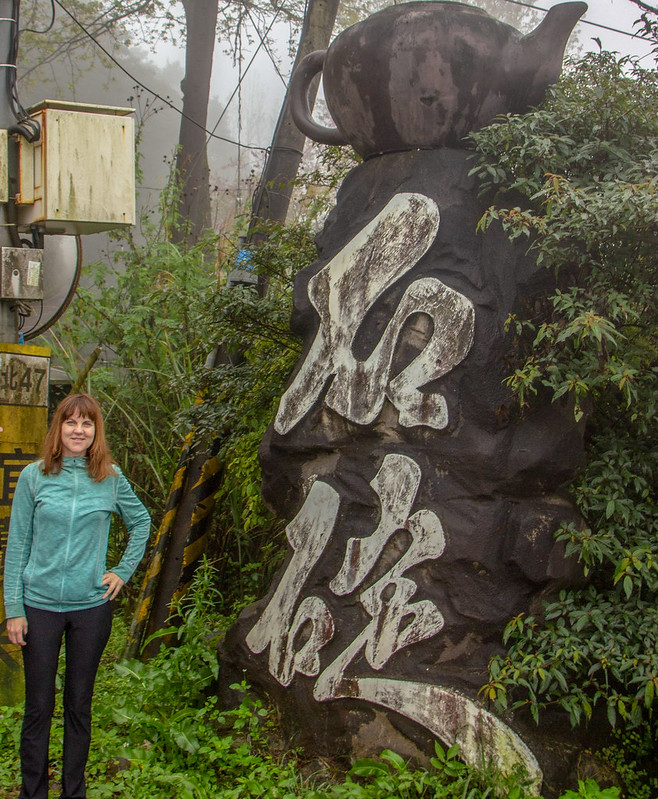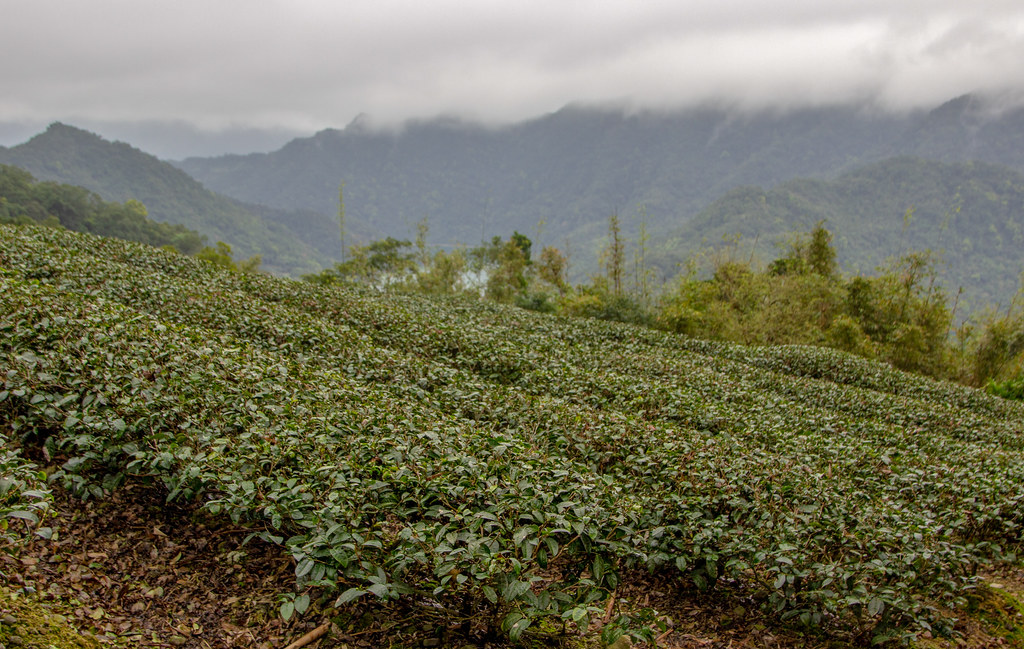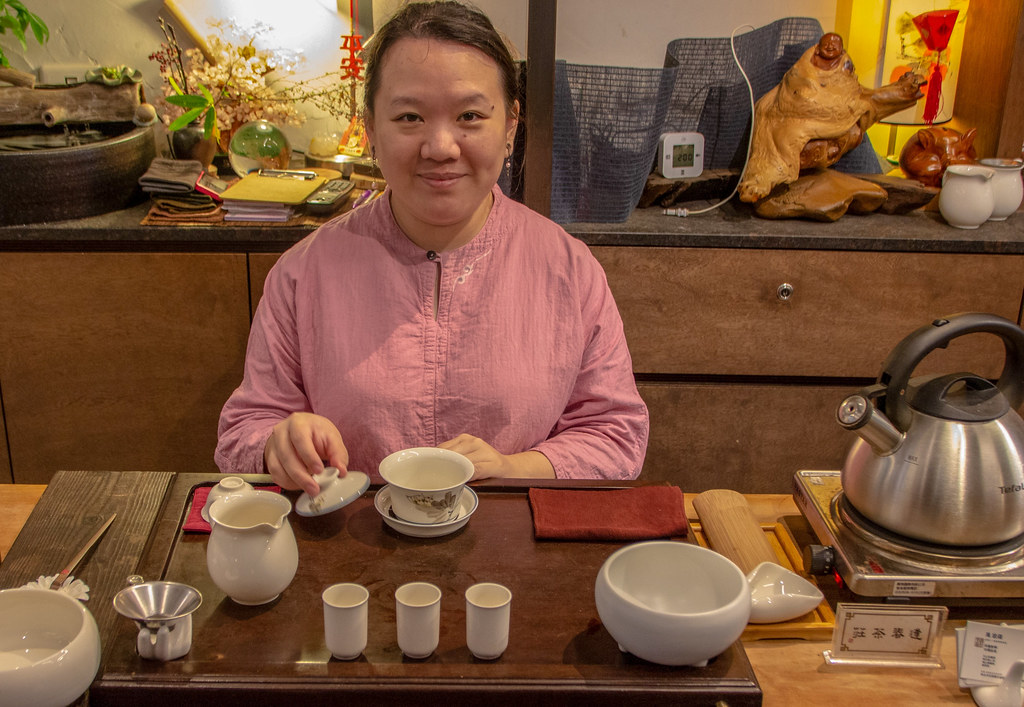In Taiwan the tea ceremony is a spiritual practice or meditation. Being in one takes you to the roots of this ancient tea culture. Taiwan offers authentic ways to explore a tradition, that has evolved from China into its own unique style. With My Taiwan Tour in Taipei, I had a wonderful experience and guide, learning about tea plantations, production and ending with a Tea Ceremony.
Taiwan Tea Tour
How Tea is Grown and Processed
We began our tour at the Kuan Yin and Pao Chong Tea Research and Promotion Center of Taipei. Here, I learned about the kinds of tea grown in Taiwan and their production process. Taipei has a moist climate, terrain and soil that is ideal for growing tea trees, brought over from SE China more than 200 years ago. This rugged island has 5 mountain ranges, offering the fertile landscape, as tea grows best alongside mountains on terraces, where the clouds cling, keeping the tea trees and soil moist for good growing conditions.
There are 5 levels of tea in Taiwan, based on the fermentation strength of each process: White (no fermentation)/Green tea (slight fermentation); Pao Chong (10-20%); Oolong (30-40%), Kuan Yin (40-60%) and Black (100%). Taipei’s growing conditions are best for the Pao Chong and Kuan Yin teas. In the exhibition room, I saw the tea processing machines used for the following stages:
In the exhibition room are tea processing machines used for the following stages:
WITHERING-Tea leaves on bamboo trays for days; SHAKING to draw out the vegetable smell; PANNING -high temperature to destroy yeast activity & stop fermentation, remove vegetable smell & dry water content; ROLLING (strands)-squeeze juice out of leaves out on to its surface / Ball-type rolling process leaves into balls; BAKING-reduce moisture, improve flavor & aroma; DRYING-STAGE 1-heat circulation leaving water content at 20%; and DRYING-STAGE 2-heat circulation leaving water content at 3-5%
I also enjoyed a nice cup of tea, while watching a 20-minute film, explaining the history and production of tea in Taiwan. I left feeling very informed and appreciative for the knowledge to better understand this ancient, healthy tradition.
Maokong Gondola for view of Taipei
As an interlude, my guide left me at the mountaintop of Maokong Gondola. Here, I traveled down and through the mountains, lush forests and hiking trails on the fringe of Taipei. It was a cold, rainy day so my view was limited, but still breathtaking, giving me perspective on the healthy green space available in Taipei to rejuvenate through nature. It’s delightful to find pink cherry blossoms in February, brightening the gray day at the top of the gondola.
Taiwan Tea Tour at Shiding District
Next, we drove south of Taipei to a rural area known for its tea plantations in the Shiding District. Our drive winded through curvy, narrow roads along the mountainside high up in the mist and fog.
As we gained elevation, we came out of the fog into a panoramic view of the tea plantations, along the mountainsides with the valley and its river and reservoir called the 1000 Island Lake. It was gratifying to see the beauty of tea trees in their natural setting, thus, appreciating even more the healing properties of tea from Mother Nature.
Taiwan Tea Tour and Tofu
Shiding Village
We reached our high destination at the Shiding Village, nestled between mountains alongside a river. It’s a small, charming town where you can enjoy fresh air and car free zones to explore the shopping, along with many Chinese restaurants. Shiding is renowned for its tea and tofu, drawing many visitors to enjoy these epicurean options. Little did I know that tofu would be the other highlight of my day.
Not to leave out the delicious Tofu dishes for lunch
First, we found a restaurant known for its variety of delicious tofu dishes. This popular place was raucously full, with no place to sit. With my stomach growling and mouth-watering while reading their menu, I couldn’t miss out on their tofu options: roasted, fried, rolled, and pudding. I ordered the roasted tofu and pudding for takeaway and brought it to the teahouse. At the teahouse we ordered sublime noodles with the perfect texture and taste, drizzled by spicy sesame sauce.
We indulged in the sensual feast at the quiet table looking out the window at rain, trees and the river in a warm, cozy teahouse. Hunger is the best sauce, so I welcomed this meal with elated taste buds. It was grounding to connect with this delicious food, contemplating why it tasted so good, almost like a preparation for the tea ceremony.
I learned a lot from this meal about noodles and tofu, setting a higher culinary bar.
Realizing the sensual symphony here, I opened my piping hot, roasted tofu and added it to the noodles. Superb, what a scrumptious improvisation! The roasted tofu offers the best of savory nuances being slightly roasted outside, with an almost fluffy interior. Before, I struggled with tofu options: fried being too greasy and hard, and the soft being too soggy and tasteless. The roasted was a nice balance for bringing out the true taste of tofu, accented by a satiating texture to offer a sense of gratifying fullness.
Lastly, I opened my tofu pudding, discovering what is it really? Hmm, chunks of fresh tofu steamed with ginger. Thankfully, it was light with a lot of spicy, ginger broth good for digestion, so I enjoyed it on a full stomach.
The Tea Ceremony
Then our crowning jewel of the day: The Tea Ceremony. This tea house is owned by a fourth-generation family, now run by a woman named Huang Yu-wen. My guide and I sat across from Huang welcoming us with a humble, quiet smile and her tea set for a formal Chinese tea ceremony in between us. The array of tea utensils neatly spread out on a tray were intriguing me into a new world, of which I eagerly waited to explore…
My tea ceremony was educational, as well as sensually gratifying. My guide interpreted the Tea Master’s explanation of the use for all the utensils and the guidelines for steps involved in the tea ceremony. First, we took a moment to look at the vibrant, green tea leaves and fully connect, while noticing its shape, color and texture. The 98-degree F water was poured in a precise way, to extract the elegant tea from its leaves. We experienced 3 rounds with a tea batch, each being steeped longer.
The tea was first poured in a temporary cup and then emptied into our drinking one. The emptied cup was to fully appreciate the smell of the tea. When tasting our first cup of tea, we took a moment to notice and connect with the mouthfeel and taste of the tea, as it slipped down our throats into our stomach. We discussed the nuances and savory taste of the tea. I sampled the Pao Chong tea which is lighter and flowery, and the Kuan yin with a darker, more smoky taste. After observing Huang, she let me lead the ritual and follow the special rules and order of the tea ceremony, softly correcting me as I made mistakes along the way.
The tea ceremony is a form a meditation.
The tea ceremony was pleasantly conversational, each sharing our experience and connection with the tea. My guide and I both contrasted the tea ceremony with the modern idea of “Happy Hour,” when people drink alcohol to escape from stress and inhibitions. The tea ceremony is opposite, in that one immerses deeply into the moment to connect and ground within harmony to the environment. It truly is a meditation, practicing being present, aware and conscious of your connection to tea and the ceremonial experience.
Health Benefits of Tea
Tea has many health benefits for the mind and body. Tea leaves contain Theanine (amino acid analogue) that have shown to improve cognitive abilities, mood and decrease stress. It crosses the blood brain barrier, and increases serotonin, dopamine and GABA. Theanine stimulates the mind in a soothing way, without the jittery anxiousness that comes from coffee. Tea also contains many antioxidants and has been shown to be good for the heart and increasing metabolism for weight loss.
This is Why I Travel…
I truly enjoyed my tofu and tea culture day of Taiwan and learned so much. Lastly, I found the space in my stomach to indulge on delicious tofu cheesecake from a bakery on the way back to our car. This is why I travel, to experience the essence of diverse cultures and integrate what I learn to share with others. Now, I can perceive and connect with tea and tofu from a deeper level, feeling respect and appreciation for these gifts from Mother Nature for my health and well-being.
Read More!
Lungshan Temple & Herb Lane in Taipei’s Historic Manka District
The Colorful Temples of Lotus Pond in Kaohsiung City

